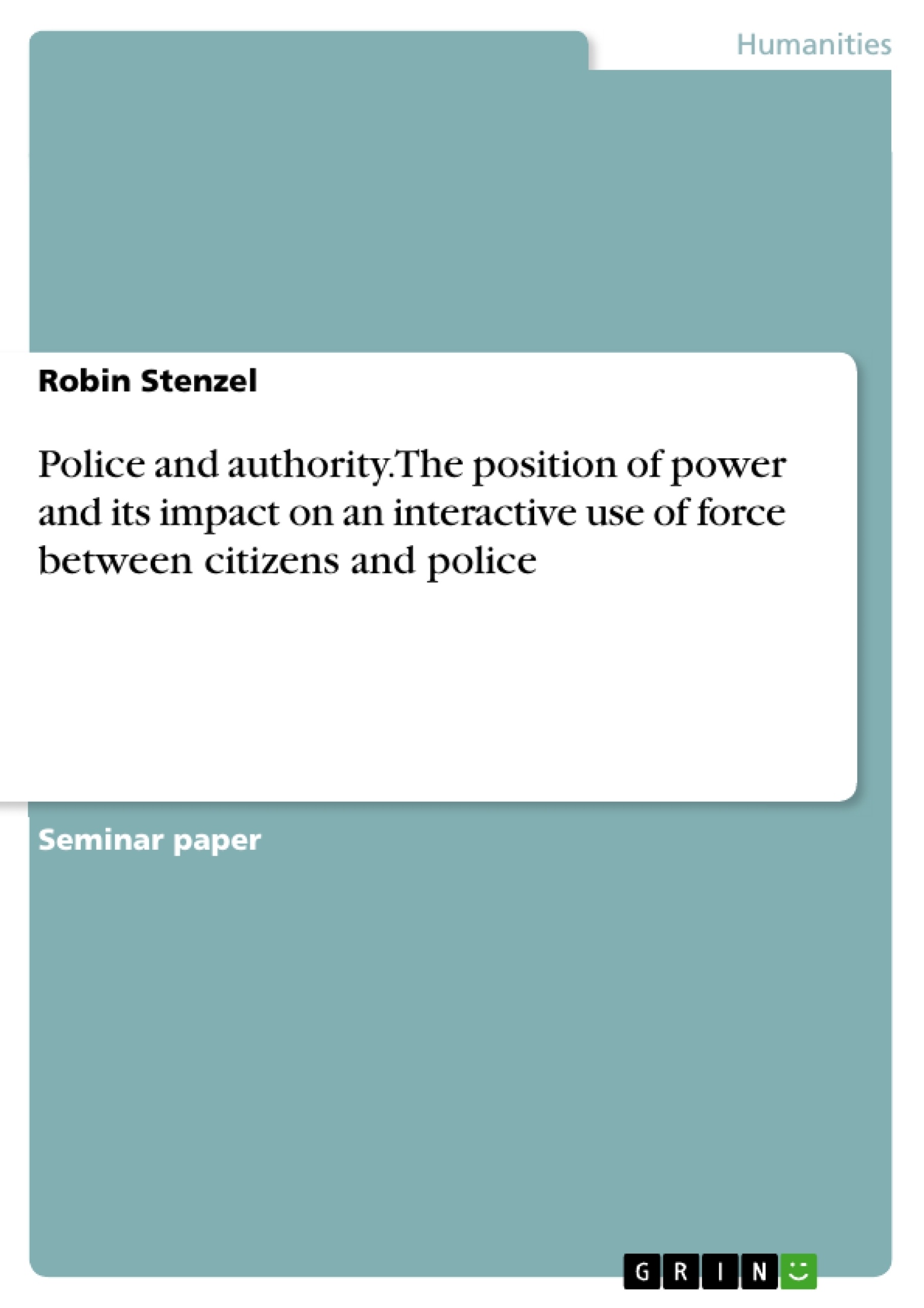This thesis investigates whether and how the power position of the police affects the use of violence between citizens and police officers. The German media are increasingly reporting on the phenomenon of excessive use of force. The question arises as to how this escalation of violence came about. It is questionable whether a certain position of power influences behavior in the interactive use of violence between citizens and the police.
First of all, the police monopoly on the use of force must be defined in more detail. The concept of violence is then explained in the broadest sense and linked to the concept of proportionality. The concrete use of force in the form of direct coercion is determined in connection with this. The question of the causes of police violence is subdivided into various theoretical approaches. It should be noted that the term police violence always means the disproportionate use of force. On this topic, the emergence of police structures is discussed first. The temporal component of this history of origins then leads to the concept of subculture among police officers. The term "cop culture" in particular is explained in more detail.
When researching the causes of police violence, one comes across two theories. One is the “Authority Maintenance Theory” and the other is the so-called “Control Balance Theory”. The core statements of these theories are presented and brought into a police context. As the story progresses, the question arises as to the consequences of the escalation of violence. The criminal offense of bodily harm in office according to § 340 of the Criminal Code is discussed in more detail. If there are indications of the existence of this criminal offense, an investigation is initiated. With regard to the procedure, problems in the conduct of this investigation must be explained. Finally, a summary conclusion is drawn.
Inhaltsverzeichnis (Table of Contents)
- Introduction
- Definitions
- The state's monopoly on the use of force
- The concept of violence
- Proportionality
- Direct coercion
- Causes of police violence
- Emergence of police structures
- Subculture among police officers - "Cop Culture"
- The "Authority Maintenance Theory"
- The "Control Balance Theory"
- The perpetrators "police"
- The bodily injury in office
- Problems in the investigation procedure
- Conclusion
Zielsetzung und Themenschwerpunkte (Objectives and Key Themes)
This work aims to understand the phenomenon of excessive use of force by police in Germany, exploring its causes and consequences. It delves into the legal framework surrounding police power, examining the concept of violence, proportionality, and direct coercion within the context of the state's monopoly on the use of force.
- The role of the state's monopoly on the use of force in police actions
- The concept of violence and its application in the legal framework
- The significance of proportionality in the context of police interventions
- The causes of police violence, including the emergence of police structures and existing theories
- The consequences of excessive use of force by police, focusing on the criminal offense of bodily injury in office
Zusammenfassung der Kapitel (Chapter Summaries)
- Introduction: This chapter introduces the topic of excessive use of force by police in Germany and the need for a comprehensive understanding of the phenomenon.
- Definitions: This chapter defines key concepts such as the state's monopoly on the use of force, the concept of violence, proportionality, and direct coercion, laying the foundation for the subsequent analysis of police violence.
- Causes of police violence: This chapter explores various theoretical perspectives on the causes of police violence, including the emergence of police structures and the subculture among police officers. It also examines the "Authority Maintenance Theory" and the "Control Balance Theory."
- The perpetrators "police": This chapter examines the criminal offence of bodily injury in office and the challenges associated with investigating such cases.
Schlüsselwörter (Keywords)
Key terms and concepts explored in this work include police violence, state's monopoly on the use of force, direct coercion, proportionality, "Cop Culture," "Authority Maintenance Theory," "Control Balance Theory," and bodily injury in office.
- Quote paper
- Robin Stenzel (Author), 2016, Police and authority. The position of power and its impact on an interactive use of force between citizens and police, Munich, GRIN Verlag, https://www.grin.com/document/1180569



